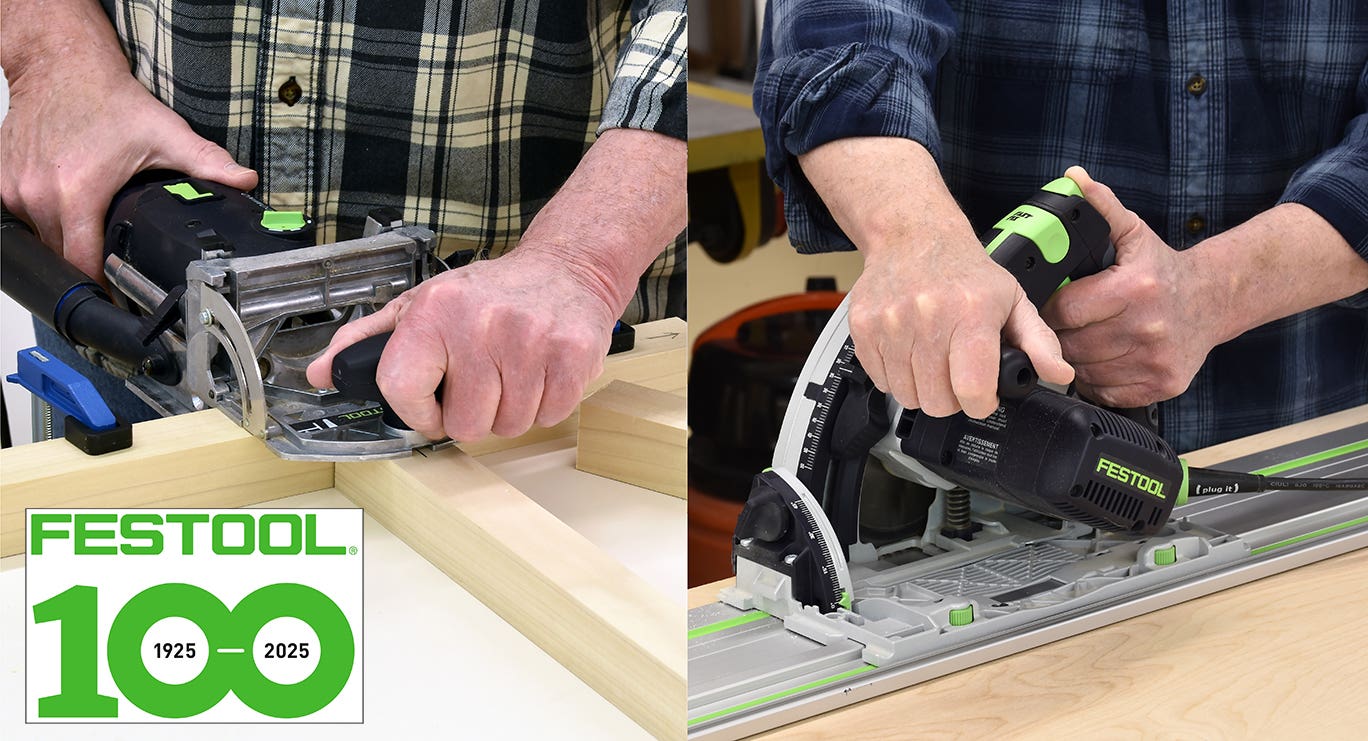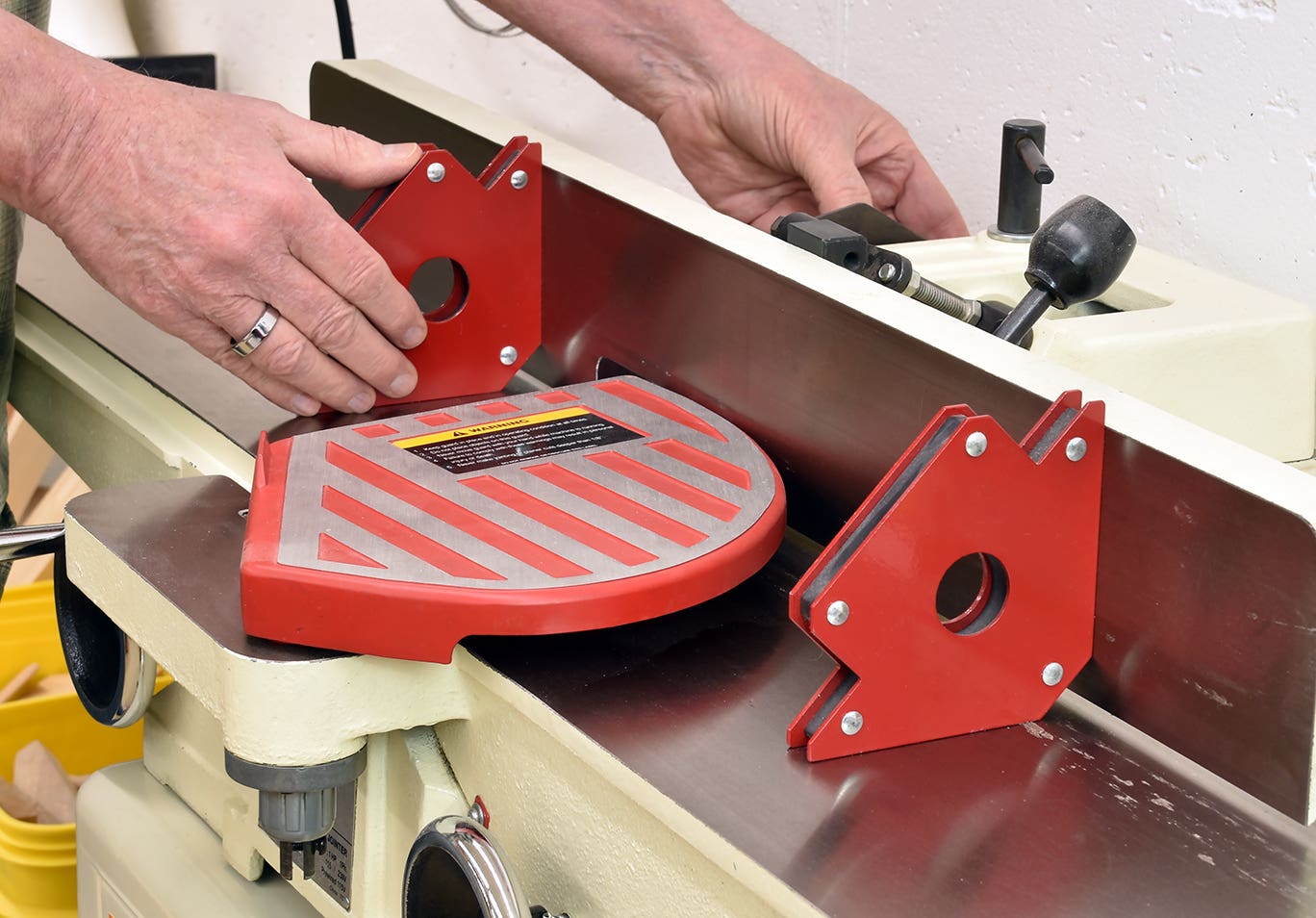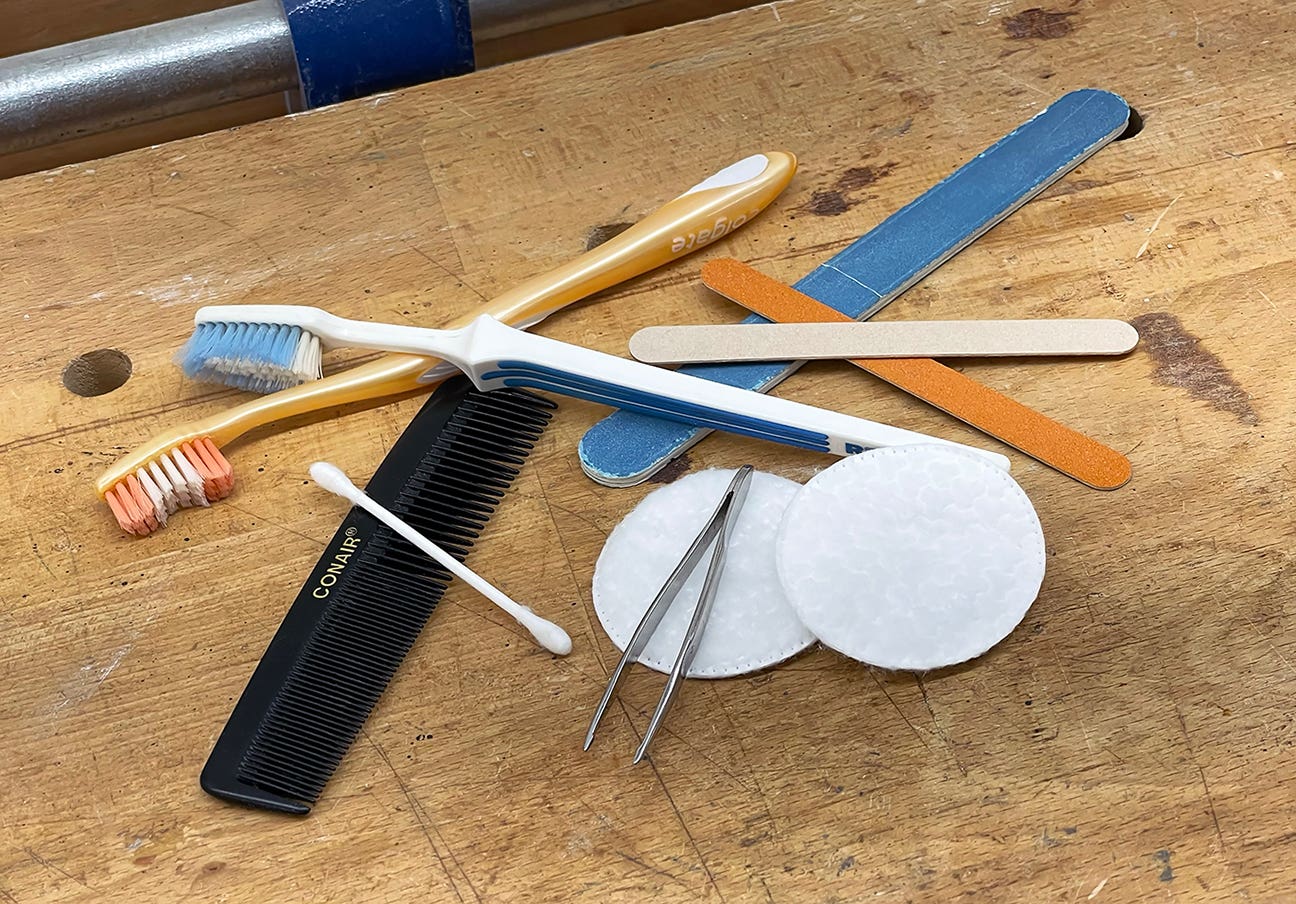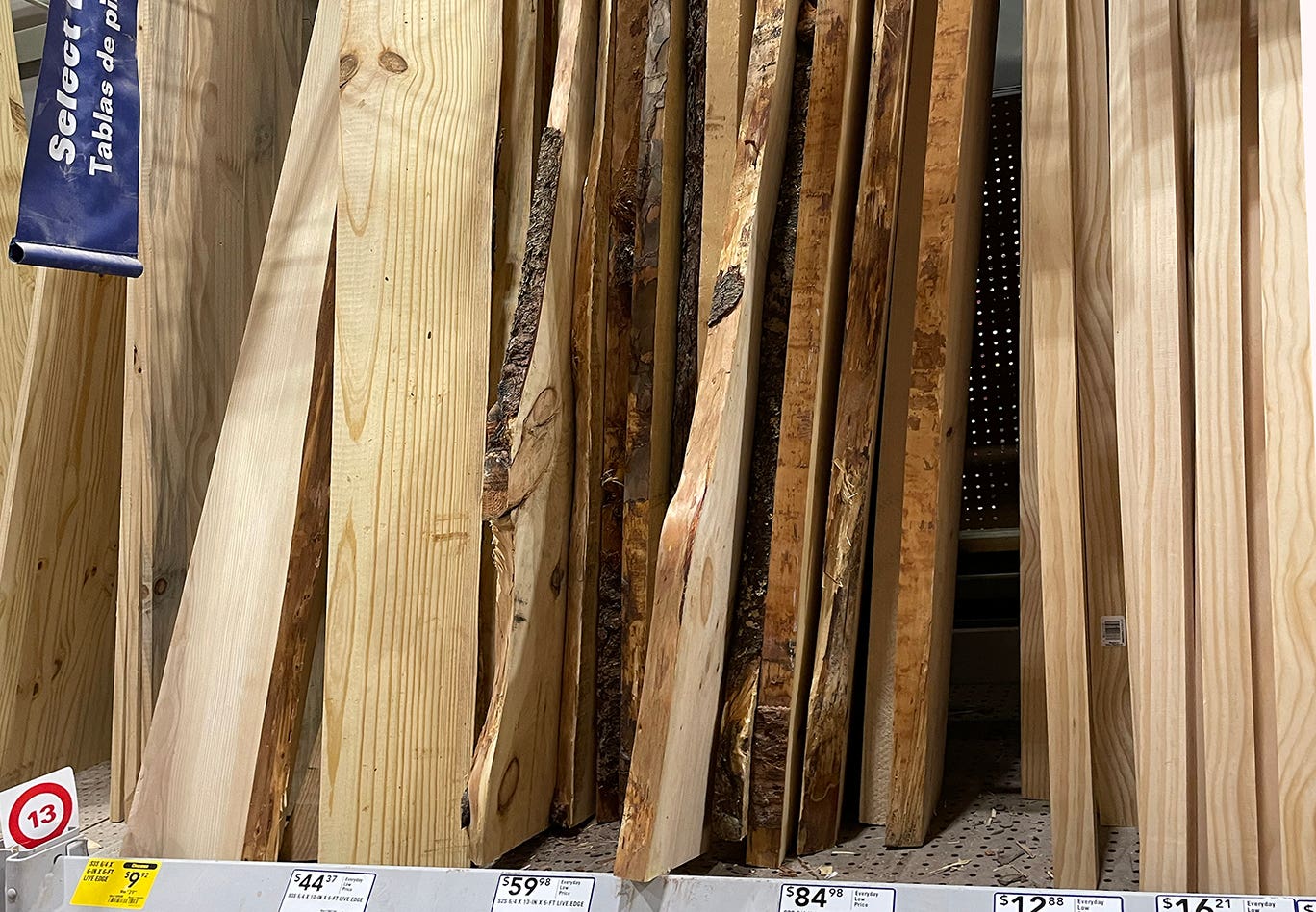Proper storage is always your final step
Finishing products and equipment are flammable and have a shelf life, so take the necessary steps to keep your shop safe {loadposition position10} As you accumulate products and tools for…
Finishing products and equipment are flammable and have a shelf life, so take the necessary steps to keep your shop safe
{loadposition position10}
As you accumulate products and tools for finishing, storage becomes an issue. Proper storage will save you money, reduce clutter and, in the case of flammable materials, possibly save your shop.
There are three categories of materials to be addressed: flammable materials, products that can go bad, and finishing equipment that can be expensive to replace if not stored properly.
Flammable materials
Concerning flammability, the finishing products you use can be divided into two types: those that burn readily and can feed a fire that has already started, and those that can start a fire all by themselves.
Almost all finishing products fall into the first category with the notable exception of those that are water-based.
There's no reason to be concerned about a few small cans of flammable products sitting on a shelf because they won't add significantly to a fire that might engulf them. But once you start accumulating a lot of products, you should store them in a metal cabinet designed for flammables.
These cabinets are double-walled, made of steel and commonly painted yellow. They lengthen the time it takes for a fire to get to the products and possibly burn out of control.
Safety storage cabinets are expensive, but they are almost indestructible so you can often pick them up used. (See www.justritemfg.com for new cabinets).
Oily rags fit into the second category and are probably the most dangerous item you can have in your shop because they can spontaneously combust. Only oils that cure, such as linseed oil, are a problem.
Because of VOC regulations, many stain manufacturers are now substituting curing oils for solvents, so oil-based stains have become a potential hazard, too. I have a friend whose shop burned down because a pile of stain rags caught fire spontaneously. There was no warning on the stain can.
So it would be wise to treat as hazardous all rags used with products that thin with petroleum distillates.
Spontaneous combustion occurs because of the heat generated as a byproduct of the curing process. When used rags are piled up, the heat in the center can't dissipate. So it builds up until it reaches the combustion temperature of the rags.
The easy solution, if you work alone, is to drape rags over the edge of a trash can or other object - by themselves, not on top of each another.
If you have employees, have them place the rags in an airtight container or immerse them in water until you, or a disposal company you hire, can remove the rags and dispose of them by spreading them out to dry or by burning.
When the rags have hardened, throw them in the trash. This is no different, environmentally speaking, than throwing a piece of wood with a cured oil finish in the trash.
Materials with a shelf life
All finishing materials will eventually go bad, but the time it takes varies considerably depending on the product.
The most obvious problem is keeping water-based products from freezing. Though most can survive a couple mild freezes, it's unquestionably best if you store these products in a location that never freezes, even in your house if necessary.
Varnishes (including polyurethane varnish) exposed to oxygen - even the small amount of oxygen in a can with some of the finish removed - go bad by developing a skin on the surface, or by turning into a gel, and then eventually harden all the way through. (If varnish is still liquid under a skin, you can remove the skin and strain the varnish; it should still be fine to use.)
You can extend the shelf life of varnish by closing containers securely, transferring the finish to a smaller container to minimize air spaces, or displacing oxygen with an inert gas (by using Bloxygen, for example).
Shellac begins losing its water resistance and ability to cure hard from the moment it's dissolved in alcohol. The deterioration is slow, so you can use shellac on furniture or cabinets with good results for a number of months, but your risk of poor performance grows the older it gets. Shelf life is extended if you store the shellac in a refrigerator or other cool place because this slows the deterioration.
Shellac in flake form also goes bad, especially the bleached or blonde varieties. You'll know the shellac is bad if it doesn't dissolve properly. Again, the process is slowed if the flakes are stored in cool conditions and it is accelerated in hot conditions.
Most lacquers and catalyzed finishes have a very long shelf life without any special care (the exception being a two-part catalyzed finish after mixing). Pre-catalyzed lacquer is also an exception because it loses much of its scratch and water resistance after a year or two on the shelf.
All dyes fade in fluorescent light and sunlight, so store dyes in a dark cabinet if you keep them in glass jars.
Finishing equipment
Finishing equipment includes spray guns and brushes.
To clean a spray gun, spray solvent through the gun and through the hose if you're using a pressure pot. Do this after you finish spraying each day so there's not time for the finish to harden.
You can be very lax with nitrocellulose lacquer. I've often left lacquer in my spray gun for weeks with no problem.
The opposite is the case with water-based finishes. I find that I often have to take the gun apart and scrub out a gummy finish unless I clean the gun immediately after each use (and sometimes even then).
Brush kits for cleaning spray guns are available from spray-gun manufacturers and at www.spraygunsolutions.com.
When the gun and all the parts are clean, reassemble the gun and hang or store it in a place where it won't get dirty.
Here's how to clean and store a brush: If you intend to use the brush again in a day or two, wrap it in plastic wrap or hang it in its thinning solvent.
If you want to store the brush for several days or longer, use the following cleaning steps for each finishing material:
- For water-based products, wash with soap and water.
- For varnish and oil, rinse several times in mineral spirits, then rinse in lacquer thinner or brush cleaner (a similar product) to remove the oiliness of the mineral spirits. Then wash with soap and water.
- For shellac, rinse in half-and-half household ammonia and water or several times in denatured alcohol and then wash with soap and water.
- For any type of lacquer, rinse several times in lacquer thinner and then wash with soap and water.
When the brush is clean, shake out the excess water and return the brush to its holder or wrap it in paper to hold the bristles straight and keep them clean while they dry. Secure the paper with a rubber band or masking tape and store the brush in a drawer or cabinet or hang it on a wall.
Bob Flexner is the author of "Understanding Wood Finishing."
This article originally appeared in the September 2009 issue.







